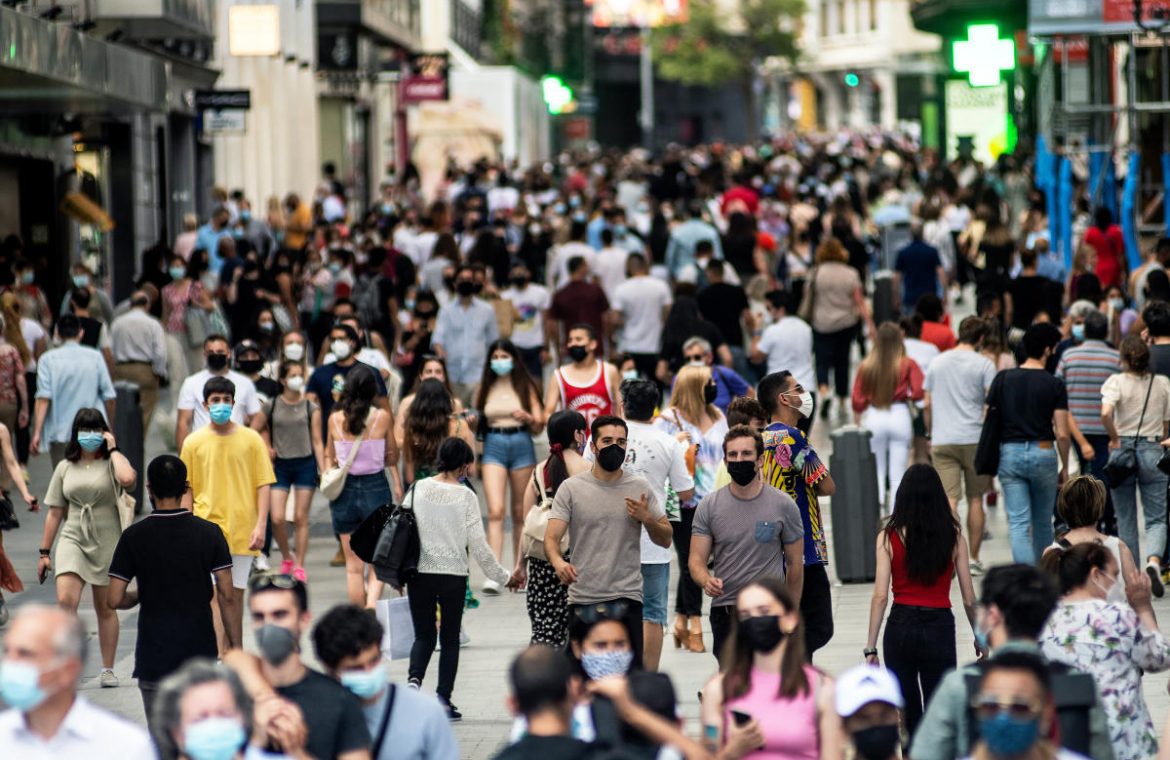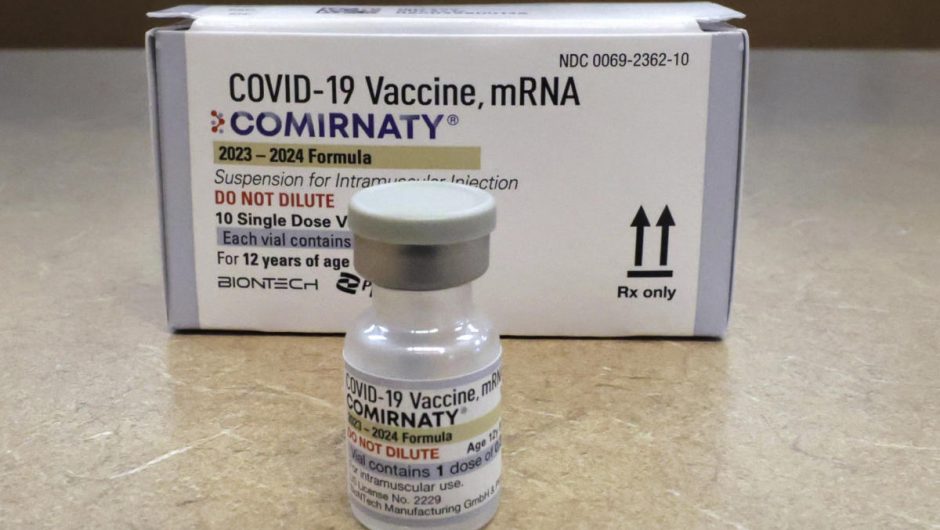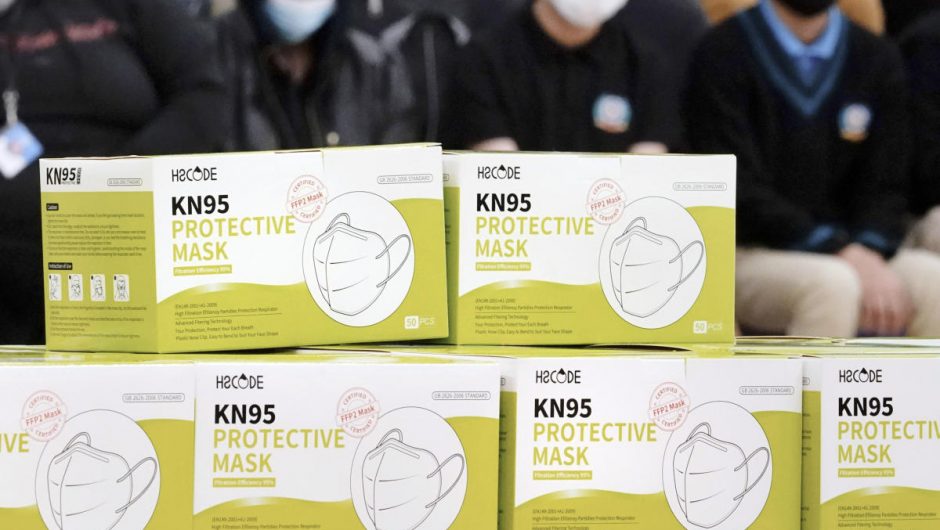[ad_1]
Europe is already entering a new wave of COVID-19, according to a joint statement released on Wednesday from the World Health Organization and the European Centre for Disease Control.
“We are unfortunately seeing indicators rising again in Europe, suggesting that another wave of infections has begun,” Dr. Hans Kluge, WHO regional director for Europe, and Dr. Andrea Ammon, director of the ECDC, wrote.
Weekly reported cases in Europe started to rise in September, according to the most recent regional data for Europe from the WHO’s COVID-19 dashboard. During the week ending on Sep. 4, Europe recorded 1.14 million new cases and during the week ending on Oct. 2, weekly cases were just over 1.79 million.
“There is an uptick in most countries in Europe, certainly in Germany and Italy,” Dr. Jennifer Lighter, pediatric infectious disease specialist at NYU Langone told TODAY. The new wave may be concerning, but it’s not entirely surprising. “We do expect that (COVID-19) will eventually go into an endemic seasonal pattern that would spike in the winter,” Lighter added.
However, Europe’s fresh wave of COVID may foreshadow what’s to come in the U.S.
“We’ve seen with other waves or bumps that they often start in Europe and then come to the U.S.,” said Lighter, adding that this usually happens within two to three weeks.
In addition to cases, COVID-19 hospitalizations have also been on the rise in the last several weeks in Europe, according to Dr. Albert Ko, an infectious disease physician and professor of public health, epidemiology, and medicine at Yale School of Public Health. These hospitalizations are increasing among people over 65 who are more vulnerable, Ko added.
The omicron BA.4 and BA.5 variants still make up the majority of these cases, said Lighter, though other variants are cropping up around the world, such as BA2.75, which is more transmissible and less responsive to antivirals and vaccines. “We’re not really seeing the variant BA2.75 take hold yet,” said Lighter.
Story continues
“This wave, I believe, is being driven by increased exposures and contact rates, rather than the introduction of a new variant,” said Ko. This is not unexpected, Ko noted, because restrictions like masks and social distancing have been phased out while people are increasingly gathering and traveling and kids are returning to school. “We’re releasing ourselves from a lot of those things that kept us protected (during the pandemic),” Ko said.
Low COVID-19 vaccination rates (for both the primary series and boosters), especially among children, are also a problem, Ko added.
“A lot of the factors that are contributing to this wave in Europe are also present here in the U.S. … so I would be concerned that something like this may already happening here,” said Ko.
Only three weeks ago, President Biden stated that the “pandemic is over” in the U.S., TODAY previously reported.
“Emotionally we feel it’s over, but it’s not — 300 to 400 people die every day in the U.S. … That’s a lot of people, and it’s going to increase again, said Lighter.
“The numbers here in the U.S. show that we’re kind of at the bottom of the curve … but that doesn’t mean transmission is not occurring,”
“The ‘pandemic phase’ where our health care system was swamped — we’re past that, but we’re now in an endemic phase where this virus is going to continue to be with us. … We need to keep our guard up,” Dr. William Schaffner, professor of infectious diseases at the Vanderbilt University Medical Center, told TODAY.
Vaccination is crucial, the experts noted, especially among vulnerable populations. “We have the tools to protect ourselves, we just need to use these tools more,” said Lighter, adding that only 67% of the population is fully vaccinated. “Only one-third of people over the age of 50 have gotten their second booster, and only half of people over age 5 have gotten one booster,” she added.
Because the dominant strains circulating are still BA.4 and BA.5, the updated booster remains effective, the experts added. “The good news is the uptick is with a variant that we actually have a vaccine targeted for,” Lighter added.
The updated bivalent booster, which targets omicron variants, is currently recommended for everyone ages 5 and older, the CDC announced on Oct. 12. Earlier in the day, the U.S. Food and Drug Administration authorized the Pfizer-BioNTech’s booster for kids ages 5 to 11, and the Moderna booster for children as young as 6.
It’s important to remember that even if these vaccines do not have a a large effect on transmission, they do prevent severe illness, complications, hospitalization and death, Ko noted. That’s especially important as we head into winter and other viruses start to circulate at higher levels.
Children’s hospitals across the country have already been filling up due to an unprecedented surge in respiratory viruses such as RSV, enterovirus and rhinovirus, TODAY previously reported.
“We’re also anticipating that we’re going to have a very brisk influenza season, so we’re concerned that this will be a twindemic winter,” said Schaffner, adding that flu cases are already starting to rise in the US.
So now is the time to get your flu shot, the experts noted, which is recommended for everyone aged 6 months and older. Ideally, you get a flu shot by the end of October, but it can still provide protection if you get it later in the season, TODAY previously reported.
In addition to getting vaccinated, the experts emphasized the importance of mitigation measures like masking, social distancing and staying home when sick.
“People who are older, who have underlying illnesses (like heart disease, lung disease, diabetes) and anyone who’s immune compromised, they should continue to wear a mask when they go indoors or in crowds,” Schaffner said.
“A lot of people would like to put COVID in the rearview mirror so to speak. … We need to be steadfast and be careful,” said Schaffner, adding that people who have vulnerable family members or are caring for high-risk individuals should also take extra precautions.
“People are tired of all these restrictions, so the key question is: How much more people (are) willing to do to protect themselves and protect others?” said Ko.
This article was originally published on TODAY.com
[ad_2]
Source link




